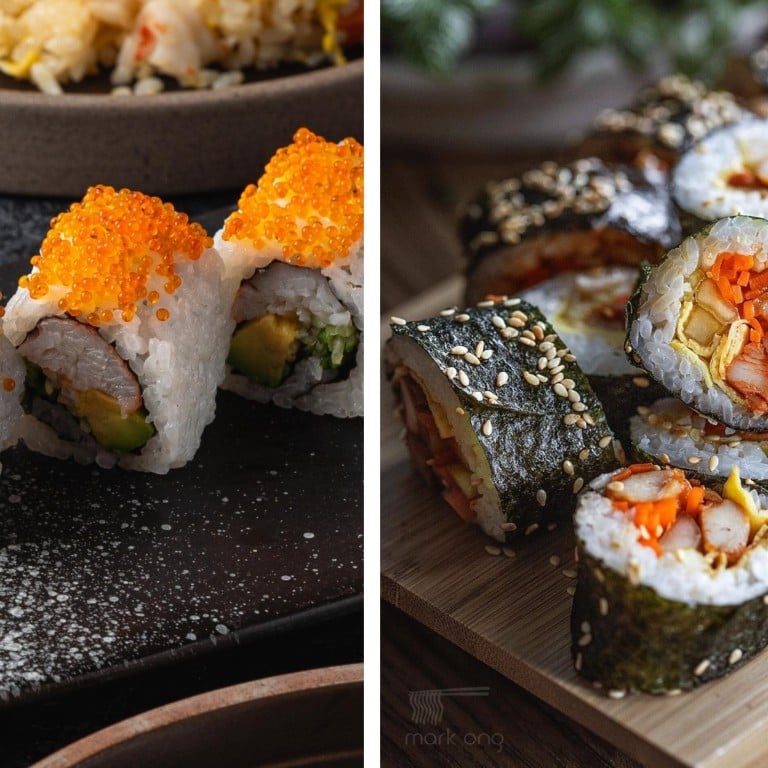Which came first, sushi or kimbap? Japan and Korea tangle over the origin of rice and seaweed rolls

Japanese records from the second century suggest salted fish fermented in rice was the origin of sushi, while Korea traces the wrapping of rice in seaweed back to the Joseon era
Japanese sushi rolls and Korean kimbap – many people struggle to tell the difference. Both often use fillings such as pickles and fish that are wrapped in rice and sheets of dried seaweed. Many sushi purists usually snub the Korean version as the ingredients aren’t traditional. However, because kimbap uses more modern and common ingredients, it has become popular as a quick and healthy meal, easily accessible and budget-friendly.

One of the biggest differences between sushi rolls and kimbap is that the latter does not use wasabi. Also, the accompaniment of pickled ginger as a palate cleanser with sushi is substituted with kimchi in the Korean version.

There is much contention, however, over which came first. The Japanese claim that Korean sushi recipes did not emerge until the early 20th century when Japan annexed Korea. It is said that the people of Korea were fond of Japanese sushi creations and found ways to make the recipe their own by incorporating Korean ingredients and cooking techniques to make kimbap. While Koreans claim the tradition of eating rice wrapped in seaweed was around long before that.
Sushi can trace its origins back to the 2nd century. Traditionally the rice would be discarded before consumption, but this evolved to the early type of sushi known as narezushi, which translates to salted fish. Fish used to be stored in fermented rice for possibly months at a time and preserved for later consumption.
This practice was not unique to Japan but common throughout Southeast Asia. You can still sample sushi in its earliest representation in the Shiga prefecture, called funa-zushi.

It wasn’t until the Edo period (1603–1868) that fresh fish was served over vinegared rice and nori. Edo-mae sushi is now seen as the gold standard of the dish and originally the term only referred to the version where fish was caught from the region. Nowadays it’s a term to describe quality sushi.
However, norimaki or rolled sushi wasn’t invented in the Edo era until 1716 as noted in Ryori Sankai kyo, a historical text documenting the food and produce of Japan.
In Korea, kim refers to edible seaweed and the production of it in Gyeongsang and Jeolla provinces was reported in books from the 15th century, such as Gyeongsang-do Jiriji and Sinjeung Dongguk Yeoji Seungnam. But citizens have been wrapping cooked rice in kim, called bokssam, since the Joseon era (1392–1897).